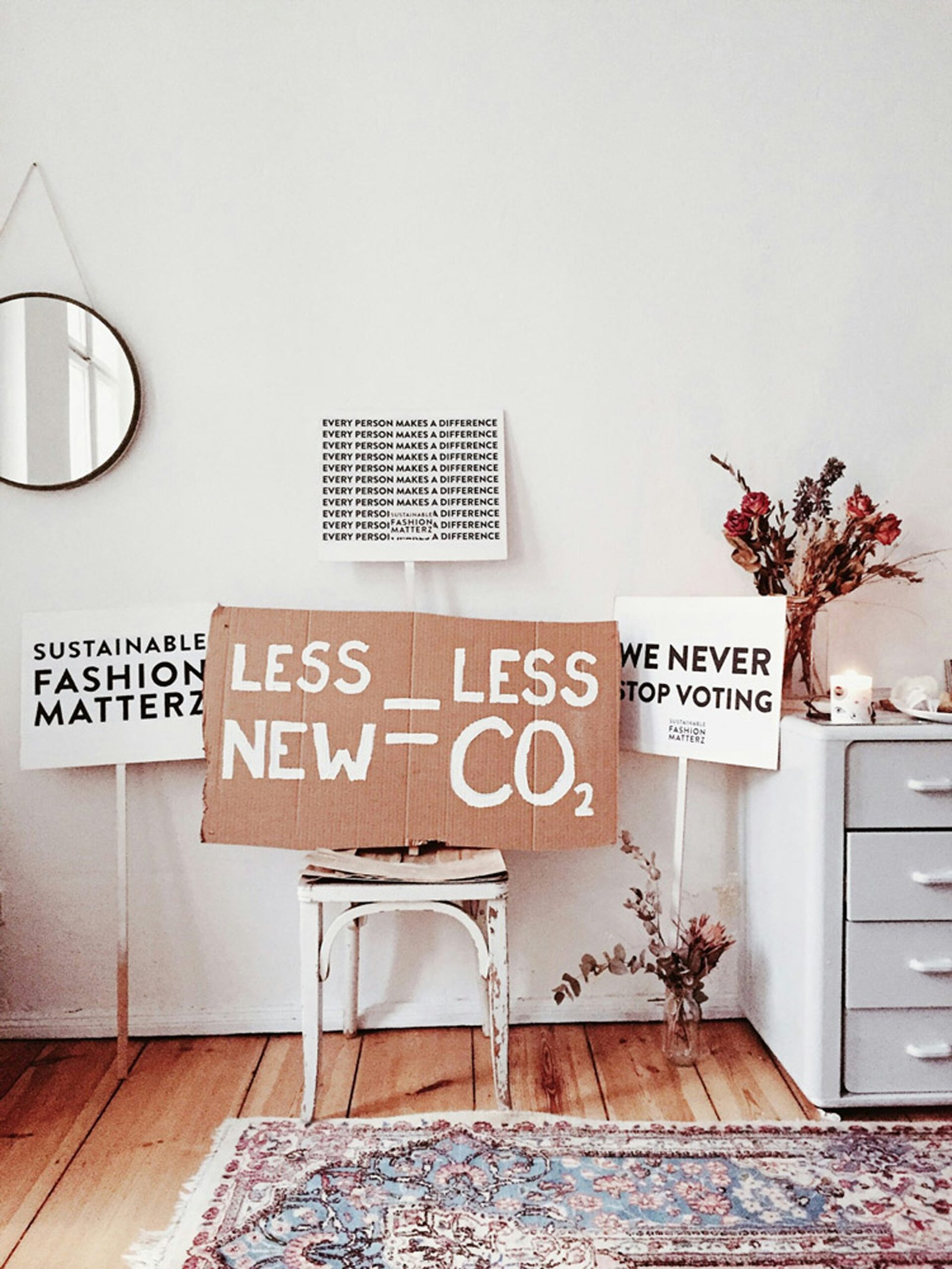
Sustainable Fashion: A Step Towards a Greener Future
In recent years, the fashion industry has faced increasing scrutiny for its negative impact on the environment. From harmful chemicals used in textile production to the massive amount of waste generated by fast fashion, it is clear that changes need to be made. Fortunately, many brands are now embracing sustainable fashion practices, which focus on using eco-friendly materials, recycling, and increasing brand responsibility. In this article, we will explore these key aspects of sustainable fashion and how they are helping to create a greener future.
One of the most significant aspects of sustainable fashion is the use of eco-friendly materials. Traditional textile production involves the use of harmful chemicals and pesticides that not only pollute the environment but also pose health risks to workers and consumers. However, sustainable fashion brands are turning to alternative materials that are produced using organic and natural methods. For example, organic cotton is grown without the use of synthetic fertilizers and pesticides, reducing the impact on soil and water resources. Similarly, bamboo fabric is gaining popularity due to its fast growth rate and minimal requirement for water and pesticides.
Additionally, sustainable fashion brands are embracing recycling as a way to reduce waste and conserve resources. Instead of discarding old or unsold garments, these brands are finding innovative ways to repurpose them. For instance, some brands are using recycled fabrics to create new collections, while others are partnering with textile recycling companies to ensure that their products have a second life. By implementing these recycling practices, sustainable fashion brands are not only reducing the amount of waste sent to landfills but also minimizing the need for new raw materials, thus conserving natural resources.
Moreover, sustainable fashion goes beyond materials and recycling; it also focuses on increasing brand responsibility. This means that brands are taking steps to ensure that their entire supply chain operates in an ethical and sustainable manner. This includes fair treatment of workers, safe working conditions, and transparency in sourcing practices. Sustainable fashion brands are actively engaging with their suppliers to ensure that they meet these standards. By doing so, they are not only promoting fair trade but also contributing to the social well-being of workers in the fashion industry.
In conclusion, sustainable fashion is a vital step towards a greener future. By using eco-friendly materials, embracing recycling practices, and increasing brand responsibility, fashion brands can significantly reduce their environmental impact. However, it is crucial for consumers to support these sustainable practices by making conscious purchasing decisions. Together, we can create a fashion industry that not only looks good but also does good for the planet.
Eco-Friendly Materials: Reducing the Environmental Footprint
One of the main pillars of sustainable fashion is the use of eco-friendly materials. Traditional textile production often relies on harmful chemicals and synthetic fibers that contribute to pollution and waste. In contrast, sustainable fashion brands prioritize the use of natural and organic materials, such as organic cotton, hemp, and bamboo.
Organic cotton, for example, is grown without the use of toxic pesticides and fertilizers, making it safer for both the environment and the workers involved in its production. The cultivation of organic cotton also promotes soil health and biodiversity, as it encourages the use of natural farming practices that do not harm the ecosystem. Furthermore, organic cotton is known for its softness and breathability, making it a comfortable choice for clothing.
Hemp is another sustainable material that requires minimal water and pesticides to grow, making it a highly sustainable alternative to conventional cotton. Hemp plants are naturally resistant to pests, reducing the need for chemical pesticides. Moreover, hemp cultivation has a positive impact on the environment as it helps improve soil quality and prevent soil erosion. Hemp fibers are durable and versatile, making them suitable for a wide range of clothing and accessories.
Bamboo is also gaining popularity in the sustainable fashion industry. It is a fast-growing plant that requires no pesticides or fertilizers, and it can be harvested without killing the plant, making it a renewable and eco-friendly resource. Additionally, bamboo fabric has natural antibacterial properties and is highly breathable, making it a great choice for sustainable activewear and undergarments. Bamboo also has the ability to absorb greenhouse gases and release oxygen, further contributing to its environmental benefits.
By using these eco-friendly materials, sustainable fashion brands are reducing their environmental footprint and promoting a more sustainable approach to clothing production. These materials not only minimize the use of harmful chemicals and synthetic fibers but also support regenerative farming practices and help preserve natural resources. Choosing clothing made from these materials allows consumers to make a positive impact on the environment while still enjoying stylish and high-quality garments.
Recycling in the fashion industry is a crucial step towards achieving sustainability. With the fashion industry being notorious for its wastefulness and the staggering amount of garments ending up in landfills every year, it is imperative for brands to find innovative ways to give new life to old garments and reduce waste.
One effective practice that sustainable fashion brands have adopted is upcycling. Upcycling involves transforming discarded materials or garments into new products of higher value. For instance, a brand might repurpose old denim jeans into stylish tote bags or create unique patchwork designs using fabric scraps. By upcycling, brands not only reduce waste but also create one-of-a-kind pieces that add value and uniqueness to their collections. This approach not only helps in reducing the environmental impact but also adds a touch of creativity and exclusivity to the brand’s offerings.
Recycling, on the other hand, is another significant aspect of sustainable fashion. Many brands have introduced recycling programs where customers can return their old garments for recycling. These recycled materials can then be used to create new garments, closing the loop and reducing the need for virgin resources. By embracing recycling, sustainable fashion brands are challenging the throwaway culture of fast fashion and promoting a more circular economy in the industry.
Moreover, recycling in the fashion industry extends beyond just garments. It also includes recycling other materials used in the production process, such as packaging materials, hangers, and even textiles scraps. By implementing comprehensive recycling programs, sustainable fashion brands are taking responsibility for the entire lifecycle of their products, from production to disposal.
In addition to reducing waste, recycling in the fashion industry also helps in conserving resources. By utilizing recycled materials, brands minimize the need for extracting new raw materials, such as cotton or polyester. This, in turn, reduces the environmental impact associated with resource extraction, including deforestation, water pollution, and greenhouse gas emissions.
Furthermore, recycling in the fashion industry has the potential to create a positive social impact. Many brands partner with local communities or organizations to facilitate the recycling process. This collaboration not only provides employment opportunities but also raises awareness about the importance of recycling and sustainable fashion practices.
In conclusion, recycling is an essential aspect of sustainable fashion. By upcycling and implementing recycling programs, brands are not only reducing waste but also promoting creativity, exclusivity, and a more circular economy in the fashion industry. Recycling in the fashion industry is a step towards achieving sustainability by conserving resources, reducing environmental impact, and creating positive social change.
In addition to using eco-friendly materials and recycling, sustainable fashion brands are also increasing their overall brand responsibility. This includes being transparent about their supply chains, ensuring fair wages and safe working conditions for workers, and minimizing their carbon footprint.
Transparency is a key aspect of brand responsibility in sustainable fashion. Brands are now providing detailed information about their suppliers, manufacturing processes, and the environmental impact of their products. This allows consumers to make informed choices and support brands that align with their values.
Ethical practices are also at the core of sustainable fashion. Brands are working towards ensuring fair wages and safe working conditions for garment workers, often by partnering with certified fair trade organizations. This not only improves the lives of workers but also helps to combat the exploitation and human rights abuses that are prevalent in the fast fashion industry.
Furthermore, sustainable fashion brands are taking steps to minimize their carbon footprint. This includes reducing energy consumption in production, using renewable energy sources, and implementing sustainable packaging practices. By prioritizing these initiatives, brands are demonstrating their commitment to environmental sustainability and setting a positive example for the industry as a whole.
Another important aspect of brand responsibility in sustainable fashion is the use of ethical and responsible marketing practices. Brands are moving away from misleading advertising and greenwashing, and instead, they are focusing on honest and transparent communication with consumers. This includes providing accurate information about the sustainability of their products, as well as avoiding excessive and wasteful packaging.
Moreover, sustainable fashion brands are actively engaging with their customers and the wider community. They are organizing educational events, workshops, and campaigns to raise awareness about the environmental and social impact of the fashion industry. By doing so, they are not only promoting their own brand values but also inspiring others to make more sustainable choices in their own lives.
In conclusion, sustainable fashion brands are going beyond using eco-friendly materials and recycling. They are embracing brand responsibility by being transparent about their supply chains, ensuring fair wages and safe working conditions for workers, minimizing their carbon footprint, using ethical marketing practices, and engaging with their customers and the wider community. By doing so, these brands are leading the way towards a more sustainable and responsible fashion industry.

